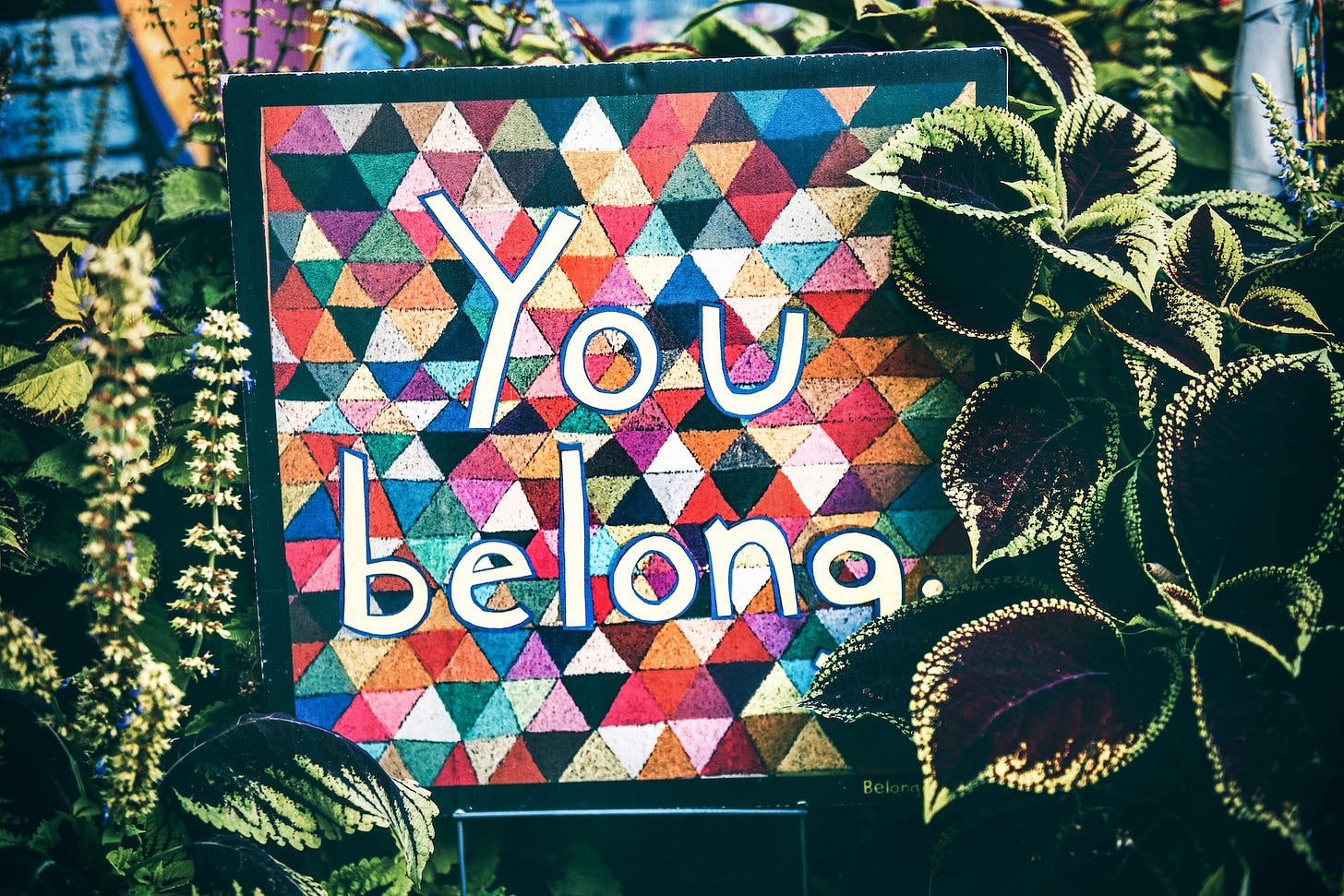The experience of belonging is essential for our physical health and emotional well-being. It's important not only that we personally experience a sense of belonging, but also that we desire it for everyone else. The wider our web of connection, the healthier we are, both individually and collectively.
The three exercises offered below are written so that you may practice them on your own. It's easy to creatively modify them to practice together within your communities to create a shared sense of belonging.
If you practice one of the exercises regularly, over time, it takes on the power of ritual. Rituals point to something that is larger than ourselves, working on our psyches in ways not often perceptible to us in our busy day-to-day lives. Trying these exercises might inspire you to create your own belonging exercises, and practicing them regularly as rituals will aid in accessing the experience of connection and purpose.
Exercise 1: Reflections on Belonging
This is a simple exercise that affirms the fundamental truth that you belong. We all do; it is our natural state.
Sit in a quiet place with pen and paper. Write down a time when you felt you belonged. Where were you? Imagine the place in your mind's eye. Write down as much as you can remember. Who was there, if anyone? Can you see yourself vividly? How did you experience belonging in your body, and what were your feelings? Write down all you can remember and don’t stop writing until you cannot remember anymore.
After you put down the pen, close your eyes and take three easy, slow, comfortable breaths.
After a minute or two, go back and read what you have written.
What was it about this situation that you believe contributed to the experience of belonging?
Where in your life, today, are there similar conditions of belonging? How much time do you spend in this place / these places? How accessible are they?
Throughout the week, reflect upon ways you can connect with these places that nurture the feeling of belonging. In the coming weeks, spend more time in places where you feel like you belong just as you are.
Also, try to bring the quality of this memory to your existing friendships and social circles. Remembering how you felt, imagine ways that you might enable other people to have a similar experience.
Exercise 2: Guided Imagery
This brief 12 minute guided imagery can help you feel more connected to people and the natural world around you. Guided imagery can induce a deeply relaxed state that might be described as a dream-like state of consciousness. These are natural states that we go into at different times of the day.
In these relaxed, open states, you are better able to utilize helpful suggestions when they resonate for you. Like any relaxed, open state approached with intention, you may experience a sense of well-being and healing during or after participating. It is also possible that you’ll experience other feelings, like discomfort, since relaxed, open states shine the light on what we need to see or explore.
During an exercise like this, everything is in your control. If you notice that difficult emotions or discomfort arises, you can simply watch it come and go. You can also step back and stop the guided imagery, and you might choose to revisit the exercise at another time to see how your experience changes. Self-exploratory practices like this one should be undertaken in the spirit of compassion and with self-care in mind.
While exercises like this can contribute to a sense of well-being, it is not a professional therapeutic intervention.
Begin by finding a place where you won’t be disrupted or distracted for 15 minutes. It’s helpful to be comfortable and relaxed, yet also alert. Sit up in a chair, in a position you can stay in for 12 minutes or so, or lie down if it's more comfortable. Listen to the guided imagery below:
Exercise 3: Practice Hospitality, Inviting the Stranger In
In the modern world, the practice of hospitality isn’t as valued as it once was. Throughout history, it was a virtue seen as necessary for living, as people knew that they would experience being both host and guest. Hospitality is the act of extending our circle of regard, inviting in the stranger, or treating an acquaintance like a valued guest for nothing in return. Treating someone like a special guest is a wonderful way to cultivate the sense of belonging, both for the host and the guest.
Get out your paper and pen again. Write down five ideas of how you can invite someone in, treating them as a special guest. They might be ideas that cause a little discomfort because they represent being vulnerable and putting yourself out there in new ways. Yet make them something you can imagine yourself doing. Don’t start with a grand gesture in the distant future, but something you can do now that is manageable.
It might be inviting a neighbor over for tea and conversation; baking cookies for the employees you talk to at your local bank; or inviting friends for a potluck and telling them to bring friends whom you have never met.
In the next two weeks, act on one of your ideas. Try not to invest emotion into the outcome;, it’s a practice!
Once a month, continue to strengthen your hospitality muscle with one of the action steps you wrote down.








